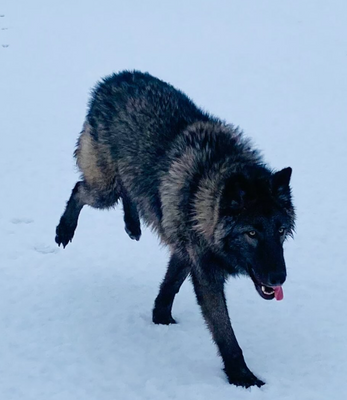How Exotic Animals Adapt to Idaho Seasons
Babby Farm on 31st May 2025
Folks who visit us at Babby Farms often ask, "How do these animals deal with our Idaho weather?" It's a great question! Our furry, feathered, and scaly residents come from all over the world, and now they call Idaho home just like the rest of us. Here's an inside look at how these amazing creatures adapt to Idaho's seasonal patterns with the support of our professional care team.
The Idaho Climate Experience
If you've lived in Idaho for any stretch of time, you know we get a bit of everything weather-wise. Our summers around Caldwell can get plenty warm, and winter brings those crisp, cold days that make you really appreciate a good heater.
For exotic animals, these seasonal variations require both natural adaptations and professional support. Our animal care team works closely with veterinary specialists to create environments that make sure everyone stays comfortable year-round. This ensures their health and comfort year-round while respecting their natural behaviors and physiological requirements. It’s kind of like how we Idahoans know to layer up in winter and keep the sprinkler and a nice cold drink handy in the summer.
When the Snow Melts: Springtime at Babby Farms
There's nothing like those first warm days in late March when the animals sense the change. After months in their winter quarters, spring brings a renewed energy that transforms our farm.
Our diverse primate family – including our capuchin monkey, spider monkey, and gibbon – become noticeably more active when they gain access to their outdoor habitats again. Our capuchin leaps around with curiosity, while our spider monkey stretches its incredibly long limbs after a winter of more confined living. Our lively and energetic gibbon becomes aerial acrobats, swinging with graceful movements that captivate the visitors that pop around during our open season.
Our red and ring-tailed lemurs become dedicated sunbathers; their distinctive faces turned upward to catch the spring rays. After months of looking forward to the warm months, they spread out in the sunshine, soaking it up like they're recharging.
Spring also brings dramatic physical changes. Our camel and timber wolf undergo impressive shedding, losing their thick winter coats in massive clumps as temperatures rise. Meanwhile, our tamanduas become more animated as insect populations increase, using their long snouts to investigate every corner of their habitat for emerging bugs.
Staying Cool in Caldwell: Our Summer Routine
By June, Idaho's famous dry heat settles in, and our focus shifts to keeping animals cool and comfortable. When temperatures soar into the 90s, sometimes even the 100s, our animal residents benefit from both their natural adaptations and our specialized cooling systems.
Our otters have it made in summer. While the rest of us are sweating, they're splashing around in their pools having a grand old time. They become real crowd-pleasers during summer visits because who doesn't love watching them play in the water?
Our sloths hang out (literally!) in climate-controlled areas where they can stay comfortable. They're not big on rushing around anyway, so they seem pretty content in their specialized habitats with carefully regulated temperatures.
Our wolf and porcupine have figured out that mornings and evenings are for being active, and midday is for finding a cool spot to relax – pretty much like those of us who've lived in Idaho for years know to do our yard work early before the heat hits!
Autumn at Babby Farms: The Countdown to Winter
Any good Idahoan knows fall means prepping for winter, and our animals are no different. When those leaves start changing, we start our winter prep too. Animals begin seasonal transitions, preparing for the coming winter months with physiological and behavioral changes
Our capybaras get extra hungry in fall, putting on a little weight for the colder months ahead. It's natural for them, just like how some of us might add an extra layer before ski season! Our vets make sure everyone's diet keeps them at just the right weight – healthy but ready for winter.
The wolf's coat changes naturally, getting thicker and fluffier as the temperatures drop. It's amazing to watch this transformation happen. By November, he looks so much more substantial than his sleeker summer self – but at the same time insulating against cold.
The Quiet Months: Winter at Babby Farms
When winter rolls in, we close to the public (from October through April), but there's still plenty happening behind the scenes. Kind of like how farmers are still busy even when there's snow on the ground!
Most of our animals move into their cozy winter quarters. We've got good heating systems, proper lighting, and everything they need to stay comfortable during those cold Idaho months.
Species with natural cold-weather adaptations, like our North American porcupine and timber wolf, actually enjoy some winter weather when it's not too bitter out. The wolf particularly seems to have a good time when there's fresh snow.
Our tropical critters thrive in specially designed winter quarters with appropriate environmental controls. The sloths' habitat maintains consistent temperature and humidity, which is essential for their health. Our primates enjoy spacious indoor habitats with enrichment programs that encourage natural behaviors and activity patterns.
Our otters still have access to water play during winter – just indoors where it's warm. They don't seem to mind the seasonal change much as long as they can still splash around!
Through Rain, Snow or Sunshine: Our Commitment to Care
Taking care of exotic animals in Idaho means being prepared for everything Mother Nature throws our way. It's not too different from how we take care of our livestock, pets, or even ourselves, we just adapt to what each season brings.
We've learned a lot over the years, working with our local vets and following the best advice from animal experts. We've set up:
- Proper housing that works for each animal's needs, whatever the weather
- Feeding plans that change with the seasons, just like our own appetites do
- Fun activities to keep everyone entertained year-round
- Regular check-ups with our vet to keep everyone healthy
- Good heating and cooling to handle whatever Idaho weather comes our way
Our approach is pretty straightforward – respect what these animals need naturally, use the best modern practices available, and add in that hands on care our team is known for. Our USDA license means we follow all the proper guidelines, but really it comes down to knowing each animal and what makes them thrive in our little corner of Idaho.
Visit Us This Season!
While we're only open from May through September, these months showcase how our exotic animals have adapted to Idaho's changing conditions. Early season visits let you see animals energized by spring, midsummer reveals fascinating cooling behaviors, and late season visits might catch early signs of fall preparation.
Your visit supports our non-profit mission and helps fund the year-round care these animals require. For hours, admission information, and special events, visit babbyfarms.net. We look forward to sharing our animal family with yours!

